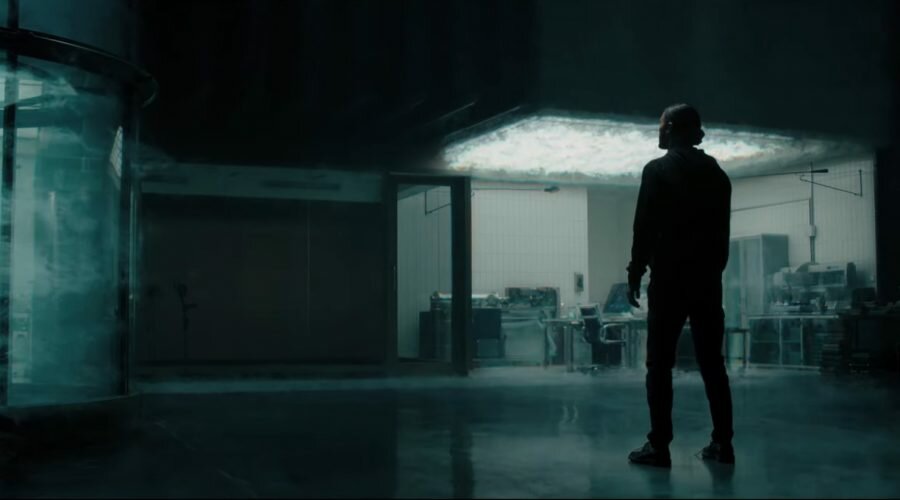With enough training, most humans can learn how to echolocate, using their tongue to make clicking sounds and interpreting the echoes that come back, reflected from the surrounding environment.
In as few as 10 weeks, researchers have been able to teach participants how to navigate obstacles and recognize the size and orientation of objects using the rebounding calls of their clicks.
The experiment, the results of which were published in 2021, involved 12 participants who’d been diagnosed as legally blind during their childhood, and 14 sighted people.
Echolocation is a skill we usually associate with animals such as bats and whales, but some blind humans also use the echoes of their own sounds to detect obstacles and their outlines. Some use the tapping of a cane or the snapping of their fingers to make the necessary noise, while others use their mouths to make a clicking sound.
Despite how useful this skill can be, very few blind people are currently taught how to do it. Expert echolocators have been trying to spread the word for years, and this study suggests a simple training schedule is all that’s needed.
“I cannot think of any other work with blind participants that has had such enthusiastic feedback,” said psychologist Lore Thaler from Durham University in the UK in June last year when the results were published.
Over the course of 20 training sessions, which were about 2 to 3 hours long, researchers found that blind and sighted participants, both old and young, all improved considerably at click-based echolocation.
For weeks, participants were trained to navigate virtual mazes – corridors arranged in T-intersections, U bends, and zig-zags – and identify the size and orientation of objects using mouth clicks.
In the final two sessions, participants had their new navigation skills tested in a virtual maze they’d never tackled before. Even while blinded in this unknown environment, collisions were fewer than they had been at the start of the program.
Clearly, the echoes of their own clicks were helping people navigate the course with greater ease than before.
In fact, the authors found these newly trained echolocators performed nearly as well in the maze as seven expert echolocators who had been using this skill for years.
In additional tests to determine the shape and orientation of certain surfaces, participants in the study actually performed equally to the experts.
Previous studies have also found sighted individuals can learn click-based echolocation in a series of training sessions, but this was the first study to test whether the results extend to blind people and people of various ages as well.
The visual parts of the brain are what allow echolocators to ‘see’ the world around them, and it’s been unclear if those who grow up without vision can use the same neural networks to the same degree.
What’s more, many people lose their vision and hearing as they age, and the older a person is, the less plastic their brain.
This can make learning new skills more difficult as you get older, but the research suggests that’s not a limiting factor in learning echolocation. In the study, blind individuals as old as 79 were able to pick up the skill with the right training.
When the authors analyzed their results (of their admittedly small experiment), they found older age in itself was not linked to more collisions in the maze task.
“Importantly, when we quantified the degree to which participants improved from session 1 to session 20 in their abilities across each of the tasks, there was no evidence for an association between age and performance in the practical tasks,” the authors wrote.
Younger age did allow some participants to finish the mazes faster, but practically, the authors said, “training led to remarkable behavioral changes for all participants”, regardless of age.
Three months after the training sessions ended, blind participants said they had experienced improved mobility using echolocation. In a follow-up survey, 10 out of the 12 participants said the skill had benefited their independence and wellbeing.
“We are very excited about this,” said Thaler,” and feel that it would make sense to provide information and training in click-based echolocation to people who may still have good functional vision, but who are expected to lose vision later in life because of progressive degenerative eye conditions.”
Sources:
Published: June 2, 2021 – https://doi.org/10.1371/journal.pone.0252330
https://medicalxpress.com/news/2021-06-echolocation-vision-loss.html
Learning to echolocate in sighted people: a correlational study (pdf)
https://www.smithsonianmag.com/innovation/how-does-human-echolocation-work-180965063/
Published: 08 July 2019 – Human Click-Based Echolocation of Distance: Superfine Acuity and Dynamic Clicking Behaviour

